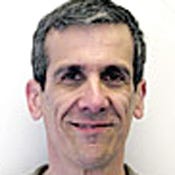Financial-services companies are adopting Linux, grid computing, and services-oriented architectures, execs say at Wall Street IT conference.

Wall Street may be the model of buttoned-down fiscal conservatism. But Wall Street financial-services companies are adopting leading-edge technologies such as open-source Linux, grid computing, and services-oriented architecture software at a rapid clip. The new technologies provide higher performance and lower operating costs, executives of those companies said at the Dealing with Technology 2005 conference in New York Wednesday.
Merrill Lynch and J.P. Morgan Chase & Co. executives said they have experienced price-performance improvements by up to a factor of four by replacing Unix-based systems with Linux-based systems.
Linux has been crucial to the success of J.P. Morgan's derivatives trading business, said Scott Marcar, head of technology for global emerging markets. Linux now powers about two-thirds of the CPUs that run J.P. Morgan's derivatives-trading operations. Derivatives are bundles of futures and options contracts.
At Chicago Mercantile Exchange Inc., the futures and options exchange, average daily trading volume on its Globex electronic trading platform has grown to 2.5 million contracts today, representing more than half of the exchange's total daily volume of trades. To help support that workload increase, the exchange began switching to Linux from Sun Solaris in late 2003, said Joseph Panfil, director of enterprise technology services. By switching to Linux, the exchange has achieved orders-of-magnitude reductions in order-execution times. "We're going for speed as well as cost savings," Panfil said.
J.P. Morgan also has linked servers with as many as 3,000 CPUs in a grid-computing project called Compute Backbone, which performs complex risk calculations to support the derivatives-trading business, Marcar said.
Merrill Lynch has crafted a services-oriented architecture dubbed "On Demand Risk" that provides a single, companywide portal that traders use to access market data and perform risk calculations. The services-oriented approach is "catching fire across the rest of the company," said Marc Baumslag, chief technology officer, liquidity and risk technology. Still, the firm isn't mandating use of the new technology, giving business managers the option of staying with legacy client-server apps, he said. "We're not dictating that [businesses units] build around a services-oriented model."
About the Author(s)
You May Also Like







